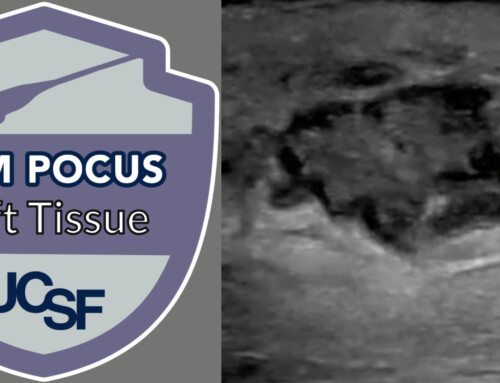A 14 year old girl presenting from Mexicali with altered mental status. Her mother reports a rash about a week ago following a tick bite. She had been going to school until 4 days ago when she became very fatigued with associated vomiting, diarrhea, tactile fevers, and headache. She subsequently collapsed at home today and was difficult to arouse which prompted EMS activation. Her mother denies any prior complaint of neck stiffness, shortness of breath, cough, hematemesis, or hematochezia.
Vitals:
- Temp 38.2C
- HR 140
- BP 129/78
- RR 22
- SpO2 96% on room air
General: Obtunded and ill-appearing
Head: No cephalohematoma or abrasions
Eyes: PERRL 3 to 2 mm, no conjunctival erythema
Mouth: No erythema
Neck: No rigidity
Cardiovascular: Regular rate, capillary refill < 3 seconds
Respiration: Clear lungs
Abdomen: Non-tender and soft; liver edge palpable 3-4 cm below costal margin
Neurologic: GCS 3
Skin: Diffuse rash
CBC: WBC 18.7 x 10^9/L; Hgb 12.0 g/dL; Hct 35%; PLT- 87 x 10^9/L
BMP:
- Na 145 mmol/L
- K 4.2 mmol/L
- Cl 110 mmol/L
- CO2 23 mmol/L
- BUN 31 mg/dL
- Cr 0.79 mg/dL
- Glucose 127 mg/dL
LFT:
- AST 219 U/L
- ALT 146 U/L
- ALK 230 U/L
- Total Bili 10 U/L
- Direct Bili 7.6 U/L
Rickettsia rickettsii
The above patient presents with a petechial rash involving the palms and soles as seen in the photographs, typical of Rocky Mountain Spotted Fever (RMSF). RMSF is a tick-borne illness caused primarily by Rickettsia rickettsii.
Doxycycline
Due to its high morbidity and mortality in children, the preferred treatment for RMSF is doxycycline regardless of age.
Rocky Mountain Spotted Fever (RMSF) is a tick-borne illness caused primarily by Rickettsia rickettsii. It can be found in all 48 contiguous U.S. states. The incidence of RMSF in the U.S. is rising, with 495 cases in year 2000 to over 4,000 in 2016.
Of note, while children represent less than 10% of all cases, they comprise approximately 22% of all fatalities. Compared with adults, children <10 years of age are 5 times more likely to die from RMSF.
Illness begins with non-specific symptoms including fever, headache, nausea, vomiting, and myalgias 3-12 days following a bite with a carrier tick. While 90% of patients have a rash during the course of their illness, the rash is often non-specific within the first few days. Development of petechiae is an ominous finding, reflective of a progressive vasculitis. Symptoms may progress to multi-organ system failure, coma, and death if untreated.
Common laboratory findings include hyponatremia, thrombocytopenia, and elevated liver enzymes. Diagnosis is confirmed with serology testing. Due to its high morbidity and mortality in children, the preferred treatment for RMSF is doxycycline regardless of age.
Take Home Points
- Due to the high morbidity and mortality of RMSF (especially in children), treatment should be initiated on history and clinical findings and not delayed for serologic testing confirmation.
- Doxycycline is the preferred treatment for suspected cases of RMSF in all ages.
Copyright
Images and cases from the Society of Academic Emergency Medicine (SAEM) Clinical Images Exhibit at the 2019 SAEM Annual Meeting | Copyrighted by SAEM 2019 – all rights reserved. View other other cases from this series on ALiEM.

Nicholas Pokrajac, MD
Pediatric Emergency Medicine
Department of Emergency Medicine
Stanford University

Latest posts by Nicholas Pokrajac, MD (see all)
- SAEM Clinical Image Series: Pediatric Rash - January 24, 2022
- SAEM Clinical Image Series: Tick Bite - January 27, 2020





